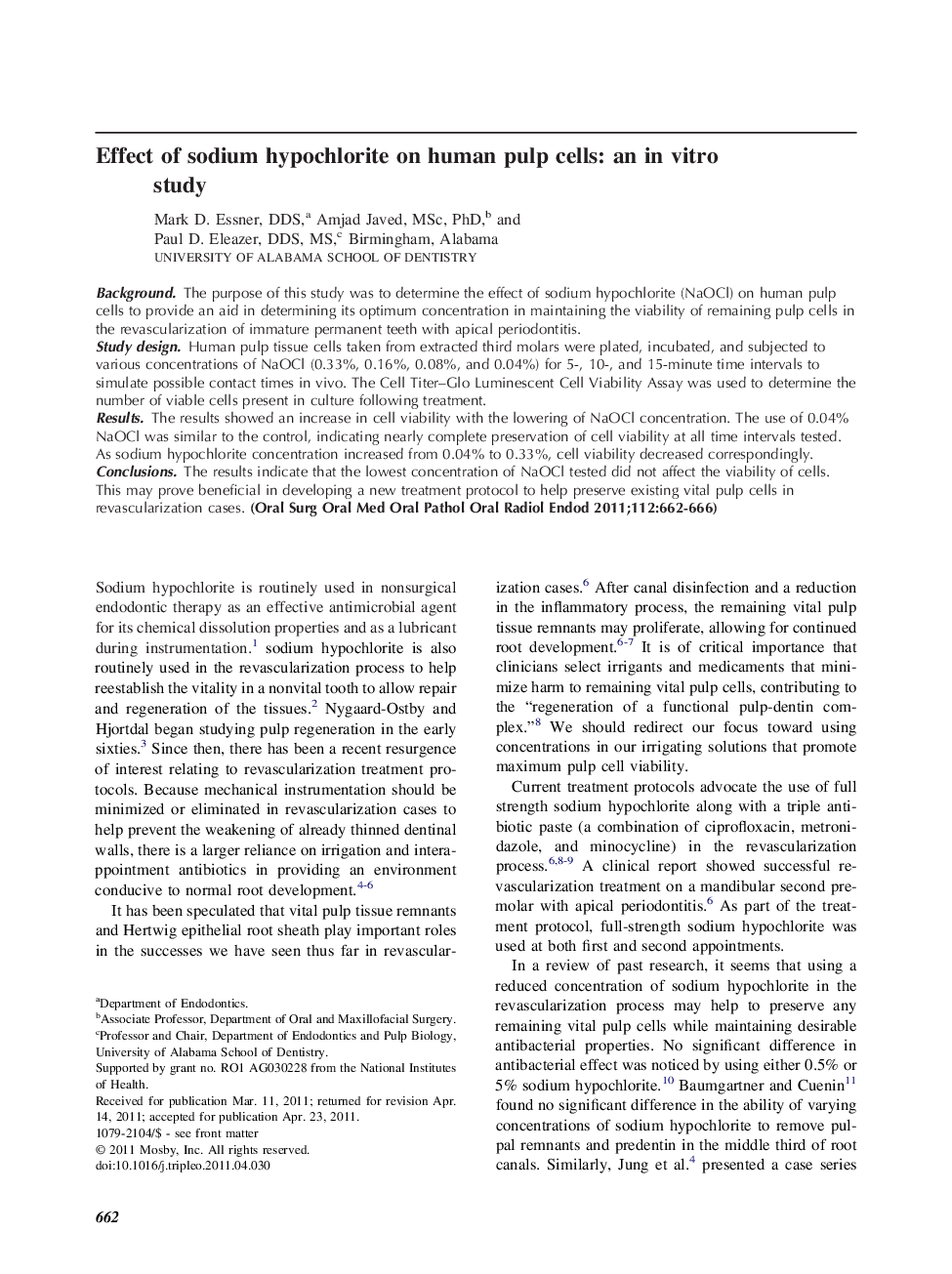| Article ID | Journal | Published Year | Pages | File Type |
|---|---|---|---|---|
| 6059605 | Oral Surgery, Oral Medicine, Oral Pathology, Oral Radiology, and Endodontology | 2011 | 5 Pages |
BackgroundThe purpose of this study was to determine the effect of sodium hypochlorite (NaOCl) on human pulp cells to provide an aid in determining its optimum concentration in maintaining the viability of remaining pulp cells in the revascularization of immature permanent teeth with apical periodontitis.Study designHuman pulp tissue cells taken from extracted third molars were plated, incubated, and subjected to various concentrations of NaOCl (0.33%, 0.16%, 0.08%, and 0.04%) for 5-, 10-, and 15-minute time intervals to simulate possible contact times in vivo. The Cell Titer-Glo Luminescent Cell Viability Assay was used to determine the number of viable cells present in culture following treatment.ResultsThe results showed an increase in cell viability with the lowering of NaOCl concentration. The use of 0.04% NaOCl was similar to the control, indicating nearly complete preservation of cell viability at all time intervals tested. As sodium hypochlorite concentration increased from 0.04% to 0.33%, cell viability decreased correspondingly.ConclusionsThe results indicate that the lowest concentration of NaOCl tested did not affect the viability of cells. This may prove beneficial in developing a new treatment protocol to help preserve existing vital pulp cells in revascularization cases.
